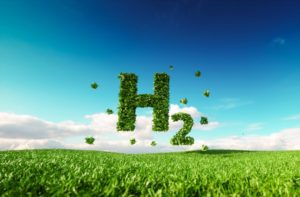by F. Menton, Aug 28, 2024 in WUWT
In the fantasy of the zero-emissions electricity future, there will either be regular devastating blackouts, or something must back up the intermittent wind and solar generation. In New York we call that imaginary something the “DEFR” (Dispatchable Emissions Free Resource). But what is it? Nuclear has been blocked for decades, especially in the blue jurisdictions that are most aggressively pursuing the wind/solar future. Batteries are technologically not up to the job, and also wildly too expensive. That leaves hydrogen. Anybody with another idea, kindly speak up.
I’ve had several posts discussing the question of whether hydrogen could do this job, for example this one on February 14, 2024, and this one on July 20. Those posts focused on the initial cost of making hydrogen by electrolysis from water. That cost turns out to be a multiple of the cost of producing natural gas by drilling into rock (for comparable energy content). From time to time I have alluded to other potential problems with having hydrogen replace natural gas in the electricity system — things like leaks, explosions, and the need for an entire new infrastructure of pipelines and trucks to carry the stuff and power plants to burn it. But until now I haven’t found a detailed study on just how bad these additional problems might be.
Now comes along an August 18 article in a peer-reviewed journal called Energy Science & Engineering, with the title “A review of challenges with using the natural gas system for hydrogen.” The article was linked on August 23 by Paul Homewood at the Not a Lot of People Know That site, and then further linked by Watts Up With That on August 24.
The lead author is a guy named Paul Martin. Unusually for an article in such a journal, no academic affiliation is given for Mr. Martin. Looking him up on LinkedIn, I find that he is not an academic, but rather identifies himself as a “chemical process development expert” who has spent “years in industry,” and is currently with Spitfire Research, Inc., which in turn states that it specializes in “consulting for a decarbonized future.” Mr. Martin then identifies several of his co-authors on the paper as a “team of people at the Environmental Defense Fund.” That information may well color your perception of what Martin, et al., have to say in their paper.
…

